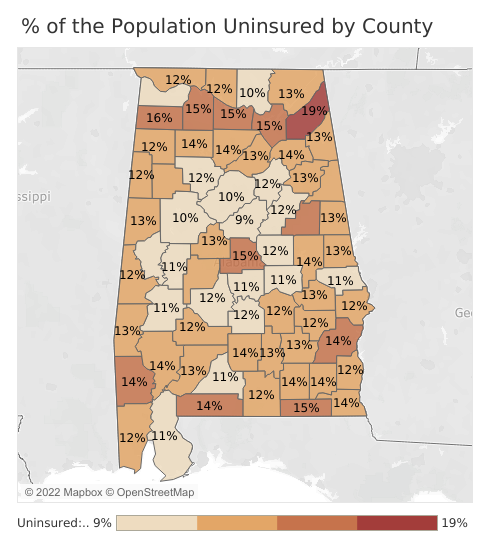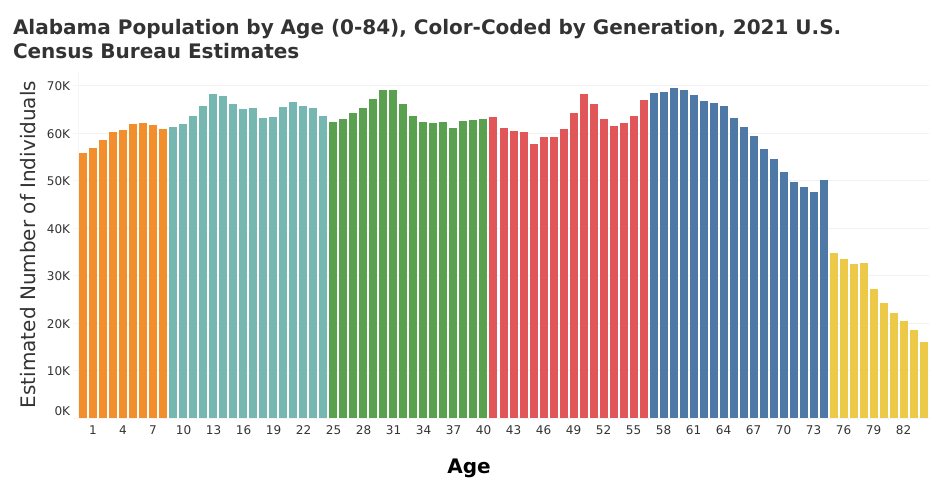
The percentage of Alabamians without health insurance rose between 2019 and 2020, according to the latest estimates from the U.S. Census Bureau. In 2020, 11.8% of the population under 65 was uninsured, compared to 11.6% in 2019.
Nationally, the uninsured rate declined from 10.8% to 10.4%. Alabama ranks 39th among the states in the percentage of its population with health insurance.
Comparison Among States
The latest estimates come from the Census Bureau’s Small Area Health Insurance Estimates (SAHIE). The Bureau has built an interactive tool for exploring the data in depth at the national, state, and county levels.
With the implementation of the Affordable Care Act in 2014, Americans gained access to health care exchanges and subsidies, which increased the percentage of people with health insurance. The law also encouraged states to expand Medicaid eligibility in order to provide health insurance to more low-income individuals. To date, 12 states, including Alabama and several other Southeastern states, chose not to expand Medicaid. Those states tend to have higher percentages of their population uninsured.
Three Southeastern states did expand Medicaid eligibility. Those states have a smaller percentage of the population uninsured than Alabama: Kentucky, 6.9%; Louisiana, 9.6%; and Arkansas, 10.2%.
Health Insurance By County
Dekalb County has the highest percentage of the population without insurance, at 19%. Dekalb and other counties across North Alabama have a greater share of residents who are Hispanic compared to other parts of Alabama. Nationally, the health insurance rate is much lower among Hispanics than in other demographic groups. On the other end of the spectrum is Shelby County, which has the lowest percentage without insurance, 9.3%
Coverage For Children: A Bright Spot for Alabama
Alabama ranks in the top 20 when it comes to providing health insurance to children. Only 3.6% of individuals 18 and younger lack health insurance, largely thanks to the ALL Kids, Alabama’s Children’s Health Insurance Program (CHIP). The program is administered by the Alabama Department of Public Health and Blue Cross Blue Shield of Alabama (BCBSAL) to provide medical, mental health, and substance abuse services through their preferred provider organizations (PPO).
Conclusion
Alabama has policy options for decreasing the number of people who lack health insurance. Recent federal legislation has provided additional incentives to expand Medicaid. An analysis by PARCA and the Center for Economic Development and Business Research at Jacksonville State University found that expanding Medicaid coverage to low-income adults in Alabama would actually save the state almost $400 million per year over the next six years. Much of that savings would come through having federally supported Medicaid coverage pay health care costs that are currently paid for by other state programs. Expansion can be handled by expanding coverage under the government program or a through insurance policies subsidized by Medicaid funding but offered by private companies.

